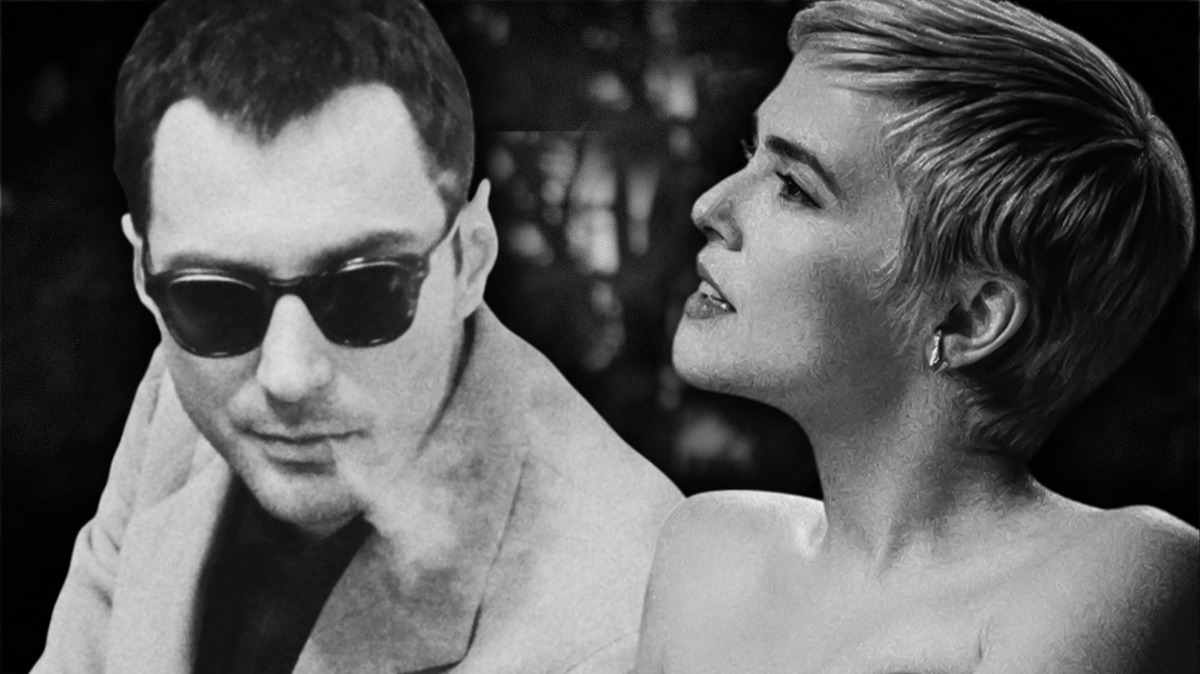'Nouvelle Vague' Movie Ending Explained & Summary: How Did 'Breathless' Impact Godard's Career?
3 days ago
Netflix’s French release, Nouvelle Vague, as the title evidently suggests, is a tribute to the French New Wave, a film movement in the 1960s that took the world by storm and continues to intrigue and inspire filmmakers and scholars. The film focuses on Jean-Luc Godard, one of the pioneers of the French New Wave, and his unconventional style of filmmaking that essentially shaped the movement. In Breathless (À bout de souffle), Godard was determined to break free from traditional narrative structure and develop a film language of his own, and well, not everyone around him was confident about his endeavor, and some assumed that his debut would go unnoticed. Breathless continues to be one of the most prominent debuts ever made, and in Nouvelle Vague, director Richard Linklater recreates Godard’s peculiar and fun filmmaking process. It goes without saying that you will enjoy this comedy-drama if you are familiar with the French New Wave movement, but then again, the film can also be a decent starting point for young film enthusiasts.
Spoiler Alert
Why was Jean Seberg doubtful about Godard’s debut?When Jean Seberg was introduced to Jean-Luc Godard, she’d debuted in Saint Joan, directed by Otto Preminger. The film received negative reception, but nonetheless she was once again cast by Preminger in his next release, Bonjour Tristesse. After the failure of Bonjour Tristesse, Jean was seen in the film The Mouse That Roared, produced by Columbia Pictures, with whom she had signed a long-term contract. The film went on to become a success. Prior to Breathless, Jean had mostly worked in Hollywood, and while she had always hoped to feature in a Truffaut or a Chabrol film, she ended up with Godard! She wasn’t sure if taking a bet on a debut director in the initial stage of her acting career was a smart move. He had only directed a short film before, and Jean didn’t have much to rely on. Her husband, François Moreuil, convinced her to take the part. Although Godard didn’t have a filmography he could boast about, he was already a prominent critic at Cahiers du Cinéma, so there were high hopes for him.
Jean wasn’t comfortable with Godard’s style at first, but she eventually just rolled with it. She felt clueless at times due to the lack of any written material to prepare for the part of Patricia. There wasn’t any script, and she would receive her lines just a few hours prior to filming, which meant she didn’t get to rehearse much. There were moments when she wanted to quit because she wasn’t sure if he would even manage to finish the film. As someone who’d worked in Hollywood—schedules, scripts, and rehearsals were crucial, and doing away with all of that made her question Godard’s capability. She complained to her husband about Godard’s decision to dub almost the entire film. Jean believed the lack of sync sound and Godard’s constant commentary from behind the camera was the reason why she couldn’t really get into her character or focus on the scene. Jean gradually adapted to Godard’s filmmaking style, though she never completely approved of it.
What was Godard’s filmmaking process?Godard felt an urgency to make his debut, especially after witnessing his contemporaries and colleagues at Cahiers du Cinema release their feature films and get well-deserved recognition for it. He’d always known he was meant to make films, but he couldn’t comprehend where he should begin. There were a few ideas on his mind, and after consulting Georges de Beauregard, he’d decided on Breathless; after all, “all you need to make a movie is a girl and a gun.”
The French New Wave filmmakers wanted to make films on a low budget to prove the point that a filmmaker didn’t have to rely on a big studio to produce their films. Since the idea behind the movement was to move away from traditional filmmaking, it was obviously important to step out of the studios and shoot on location to capture the authentic atmosphere. Godard was in favor of ditching the script and improvising on the spot; he believed if his actors prepared before the shoot, their reactions would be too made-up and there would be an overall lack of authenticity. He was determined to shoot Breathless in guerrilla style, so cinematographer Raoul Coutard shot the entire film on a handheld camera. Movement and fluidity were more important to Godard than sync-sound, so he decided to use Cameflex, a noisy camera incapable of sync-sound, to shoot the film. Since renting a dolly was an expense and time-consuming process, in Nouvelle Vague we often see Guillaume Marbeck as Godard pushing Matthieu Penchinat, who plays Raoul Coutard, in a wheelchair. Interestingly, some of the street scenes were shot from inside an enclosed cycle van to avoid drawing attention and to capture the natural reaction of the people on the streets.
Godard had previously worked with Jean-Paul Belmondo, and soon after he finalized making Breathless, he approached Belmondo. The actor was advised against working with Godard considering he was yet to establish himself as a director, but Belmondo trusted him, and moreover, he knew that working with Godard guaranteed an adventurous shooting experience, and he was up for it. On the contrary, Jean Seberg wasn’t easy to convince, but Godard was determined to cast her as Patricia. He agreed to offer Seberg $15,000, a third of the film’s budget, to stay true to his vision. Belmondo and Seberg developed a friendly relationship during the filming of Breathless.
What caused a clash between Beauregard and Godard?A schedule was prepared before the shooting began, but most days, Godard didn’t abide by it. He didn’t believe in sticking to a routine just because he was expected to. He reminded his crew that they were making art, and hence it wasn’t meant to be hurried. Some days they shot for 12 hours, and there were days when the shoot lasted for only 15 minutes; the entire duration depended on Godard and the number of ideas he managed to come up with.
The first day of shooting was at a cafe; the cast and the crew were visibly excited about starting the experimental adventure, but the shoot ended in just two hours. Godard was repeatedly warned by his peers that a rigorous filmmaking process often dimmed the creative spirit that one usually starts the journey with, and perhaps filming only when he had ideas and felt creatively excited was his way of ensuring that he enjoyed the process and didn’t end up falling victim to the rules and expectations. While the cast and crew tried to be respectful of his vision, the producer, Georges de Beauregard, was disappointed in Godard’s disregard for the shooting schedule. He was aware from the get-go that he was taking a bet on a promising talent, who was wildly experimental and aimed to question the rules of traditional filmmaking. At the time, it was evident that the audience was in search of a new kind of cinema, and taking a risk to produce a film that would define the movement was an opportunity that Georges de Beauregard chose not to give up on. Moreover, Chabrol and Truffaut had also vouched for Godard, and that was also why Georges de Beauregard had agreed to produce the film. But when things started to go out of hand, Georges de Beauregard and Godard got into a fistfight. One day, Godard called in sick, but to Georges de Beauregard’s surprise, he was relaxing at a cafe. He was furious and confronted the director, leading to the physical altercation. Although they had their creative differences, in the end, Beauregard didn’t lose faith in the young, enthusiastic director who was determined to revolutionize filmmaking. Even after the setbacks and the erratic shooting schedule, Godard ultimately managed to finish Breathless.
How did the release of ‘Breathless’ impact the careers of those involved?Truffaut had advised Godard not to kill the protagonist, but he ultimately chose a morbid ending; according to Truffaut, “Jean-Luc chose a violent end because he was by nature sadder than I.” The protagonist, Michel Poiccard, was based on a news story about a man named Michel Portail who killed a motorcycle cop after he stole a car to visit his sick mother. In Nouvelle Vague we get a glimpse of the ending Godard had envisioned; he’d asked Jean Seberg to steal Michel’s wallet after he collapsed on the street. He wanted Patricia to make a practical choice by making use of what was inside the wallet instead of letting the cops take it. But she refused to do so because she believed her character wouldn’t, and she also thought it was unfair. Instead, she looked into the camera with a flat expression and touched her lips, mimicking a gesture Belmondo’s character frequently made. Michel’s unclear final words and Patricia’s detachment yet desperation to comprehend what Michel had said offered the ambiguous ending that Godard had aimed to achieve.
Seberg was exhausted; not being on the same page with the director at almost every point wasn’t easy, and she was relieved that the filming was over. Finally in the editing room, Godard stated with confidence that he had no intention of cutting scenes; he planned on cutting within scenes—jump cuts. He had decided to only keep the strong moments to create a rhythm with the cuts. His editor warned him that the film would look choppy and abrupt, but Godard believed that was the only way to make it ‘amazing.’
In the end, Godard recognized that he had created a film unlike anything audiences had encountered before, and that realization alone was gratifying for him. He urged the audience to engage with the film and reflect on the ending instead of delivering the same old same old. As we already know, Breathless is one of the most influential films to ever be made. Belmondo’s career completely took off after the release, and he was dubbed the Humphrey Bogart of France. Jean Seberg went on to act in 35 films before her tragic death at the age of 40. Jean-Luc Godard continued to make films for the next 60 years, ranging from features and shorts to cinematic essays. Nouvelle Vague captures Godard’s eccentricity and chaos, and it will surely leave you wanting to rewatch Breathless.
...Read the fullstory
It's better on the More. News app
✅ It’s fast
✅ It’s easy to use
✅ It’s free









